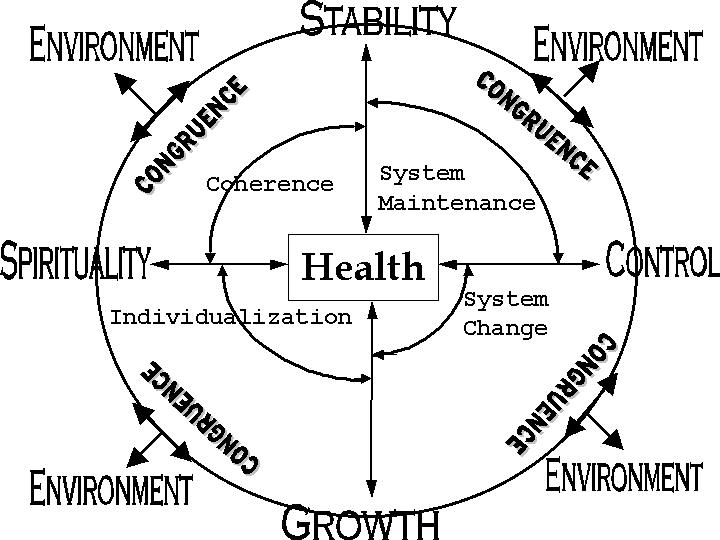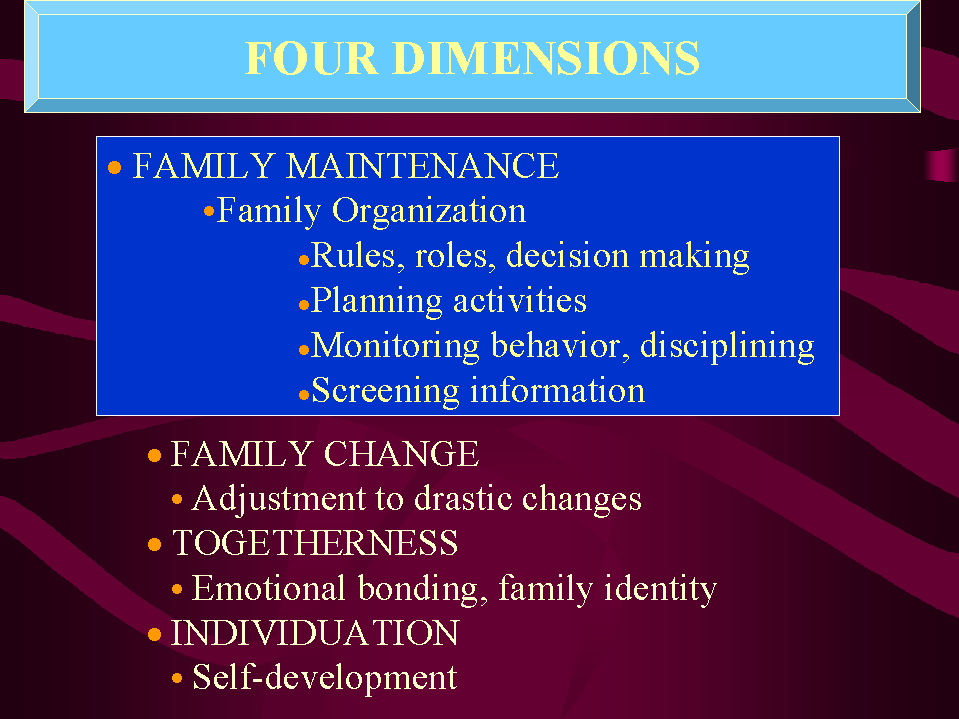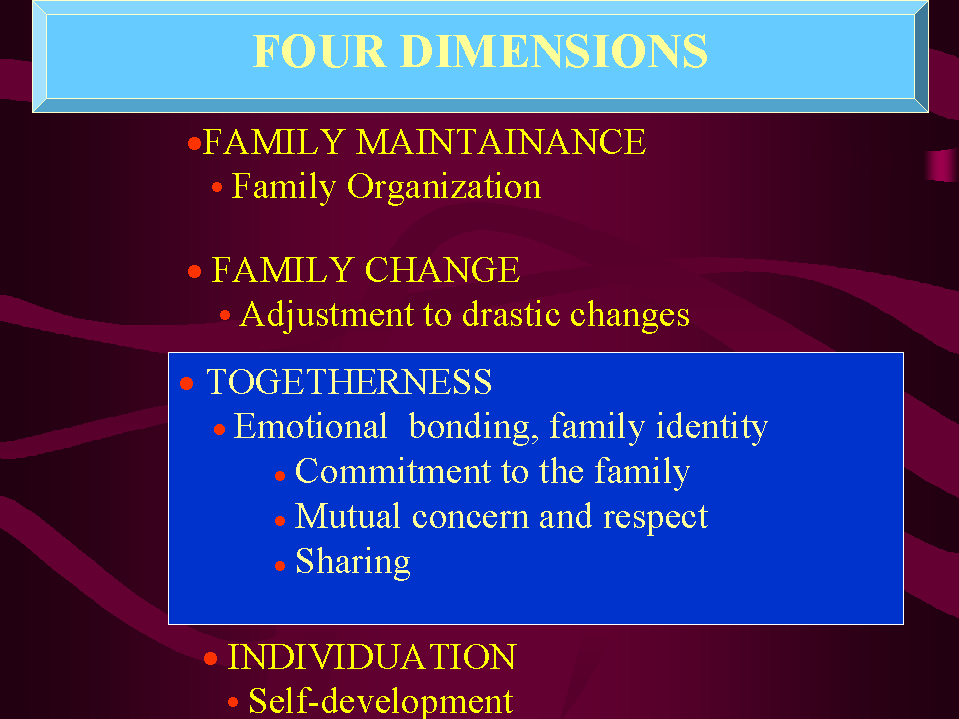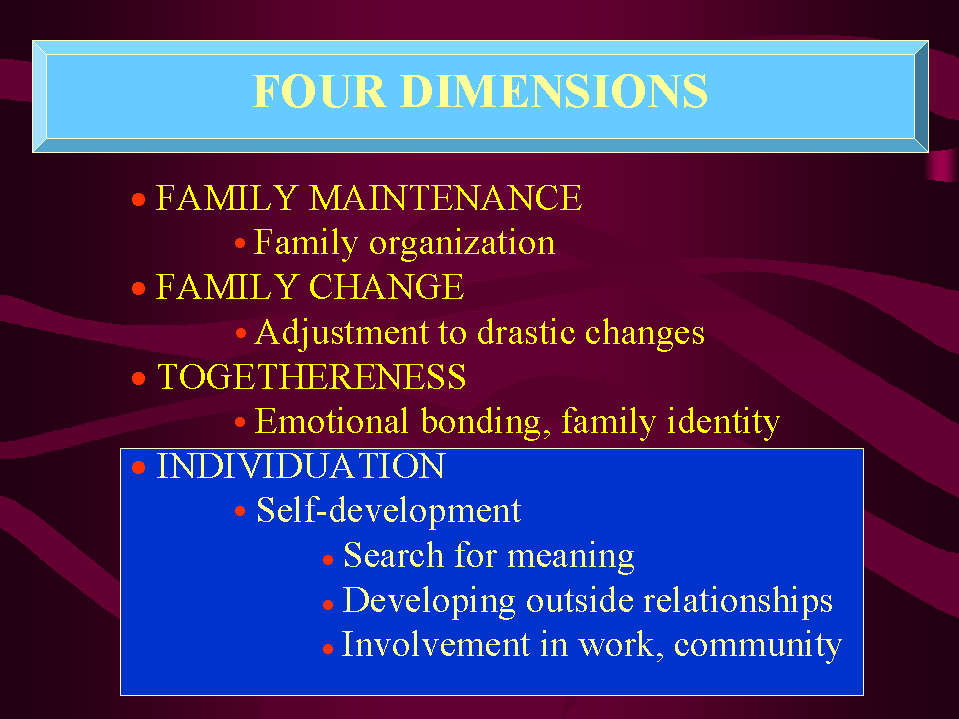Marie-Luise Friedemann, RN, PhD
OVERVIEW
The Framework of Systemic Organization is a conceptual approach to working with families, individuals and other social systems (organizations, communities).
It is presently taught in family nursing programs and research courses in the United States as well as abroad. The framework has shown to be useful to researchers who explicate theoretical processes and apply them to various health care situations, cultures and health problems, and develop situation-specific theories leading to clinical interventions. In Europe, the framework is becoming increasingly popular as a theoretical foundation for nursing education as well as nursing practice in hospital and home care.
The Framework of Systemic Organization encompasses the grand theory level based on specific philosophical underpinnings which is brought down to a less abstract and measurable mid-range level. Friedemann has expanded the nursing metaparadigm - environment-person-health-nursing to also include "the dynamic concepts of family and family health to guide the explanation of systemic function of individuals, social and environmental systems, and the interactions between them" (Friedemann, 1995, p.x). At the mid-range level, the framework suggests a process applicable to all social systems. Based on a holistic and systemic view of the world, environment, people and families are open macrosystems that strive toward congruence.
Congruence refers to the energy flowing freely between systems that are compatible in patterns and rhythms and attuned to each other. Congruence is fully realized only in an overarching universal order that is reflected and detectable in each human, nature and other systems but cannot be explained with scientific means. As disharmony and tension is inherent in most interacting systems, congruence remains an ideal rather than reality.
Health is congruence experienced within the system and between the system and its environment. As such, it is never fully achieved. Optimal health is the result of a balanced systemic life process and is a highly subjective personal experience.
Culture comprises all of a person's or family's systemic life process. It has two components. Culture maintenance consist of processes that assist in the preservation of tradition, values, beliefs, ideals and the resulting behavior patterns that define a person or family's basic nature, identity or functioning. Culture transformation is the process of adapting cultural beliefs and patterns to a changed environment. As values, beliefs and behavior strategies are changed, the new patterns are integrated in the systemic process and become tradition that is maintained and transmitted to the new generation (culture maintenance). Culture transformation in individuals and families occurs at varying rates, depending on the emphasis placed on culture maintenance and the ability to control "foreign" influence.
THE PROPOSITIONS
Environment
1. All existing things are organized as open systems of energy and matter in movement.
2. The basic order of the universe is ruled by conditions largely unknown to humans. It is timeless and
limitless, and its power is awesome. Under universal order all existing systems are connected and congruent
in pattern and rhythm.
3. The organization of systems on Earth follows an order secondary to and dependent on the order of the
universe: the laws of the earthly conditions of time, space, energy, and matter. (Friedemann, 1995, p.3)
4. The concept of environment comprises all things outside the system in focus
Person
1. Human perception is limited by the structure and function of the human body.
2. Persons have the ability to realize their dependency on natural forces and foresee death. This threat to their
systemic existence has the potential to evoke a disturbance of system processes and incongruence. All
incongruence is experienced as anxiety.
3. Humans have attempted to decrease their vulnerability by creating an artificial environment or civil system
within which they maintain a sense of control.
4. Persons have the capacity for transcendence through which they can reestablish congruence with systems of
their environment and with the order of the universe.
5. Culture is the total of human life patterns. Culture is ever changing through the integration of new knowledge in
the human way of life, leading to new patterns while forgetting old ones and transmitting the new patterns to
the next generation. (Friedemann, 1995, p.5)
Health
1. Health is the experience of system congruence evidenced in all levels of an individual's system, the
subsystems, and the environmental systems of contact.
2. Health is not an absolute. It is never totally absent and never fully present.
3. Physical disease is a condition that refers to the organizational disturbance at the organic system level
4. Physical disease and poor health are not synonymous and neither are lack of physical disease and good
health.
5. Physical disease may mirror an incongruence of life patterns with the order of the universe. It can lead to
health if it reveals to the person the path toward congruence.
6. The crucial determinant of a deficiency in health is anxiety that results from system incongruence, whereas
well-being is a sign of high-level health. (Friedemann, 1995, pp. 14-15)
The Framework of Systemic Organization takes a contrasting view to the medical model. According to the medical profession, disease signifies pathology and illness refers to unpleasant manifestations of a disease that require medical treatment. In contrast, intervention with this framework implies attention to the congruence of the system, to its systemic patterns that aim at congruence and its exchanges with other systems, in order to reduce the level of anxiety.
Family
"The family is a unit with structure and organization that interacts with its environment. - The family is a system with interpersonal subsystems of dyads, triads, and larger units defined by emotional bonds and common responsibilities. -- The family is composed of individuals who each have distinct relationships with family members, the total family, and contact systems in the environment. -- Members of the family do not need to be biologically related or live in a single household. The family is defined as all persons an individual considers to be family. The family includes all persons who carry family functions and are emotionally connected to the individual. Consequently, the persons who are emotionally connected are those the individual is concerned, worried, or upset about." (Friedemann, 1995, p.18)
1. The family embedded in the civil system is transmitting culture, the total of human system patterns and
values.
2. The family shares with the civil system and the environment at large the responsibility to provide physical
necessities and safety, procreate, teach social skills to its members, provide for personal growth and
development, allow emotional bonding of members, and promote a purpose for life and meaning through
spirituality.
3. The family satisfies its members' needs for control over their environment and guides them in finding their
place in the network of systems through spirituality.
4. All family processes include collectively accepted and coordinated behaviors or strategies that aim at
regulating the earthly conditions of space, time, energy and matter in pursuing the systemic targets.
5. Family strategies fall into the four process dimensions of system maintenance, system change, coherence,
and individuation. The dimensions share collinearity but exist independently in that none is emphasized at
the expense of another in healthy families. (Friedemann, 1995, pp. 16-17.)
Family Health
1. Family health encompasses four observable criteria: the presence of strategies within all process
dimensions, satisfaction of all family members with their family, positive environmental feedback about family
members' execution of roles in community systems, and low anxiety level in the family.
2. Family health is a dynamic process that, in response to changing situations, is continually attempting new ways
of reestablishing congruence within the system and with the environment.
3. Family style is the product of weighing and emphasizing the process dimensions and choosing certain
strategies within them.
4. No family style can be judged effective or ineffective without evaluation the four criteria of family health.
Nursing
(This definition also applies to family health care executed by other professionals if practiced with this model)
1. Nursing occurs on the various system levels, from organic systems to the larger social systems in the
community.
2. Nursing focused on individuals also includes the family and the environmental systems of contact. Therefore, all
nursing is family nursing and is practiced in all clinical settings.
3. All nursing interventions at the level of the family system or the community also heed individuals and their
subsystems.
4. Nursing is a process of mutual growth through spirituality.
5. The goal of nursing is the support of the clients' systemic processes leading to health, whereas the clients' goal
is health.
6. The art of nursing consists of the nurse's creative ability to shift his or her position from the role of a participant
and actor in the system to that of a bystander and shift from one system level to another. (Friedemann, 1995,
p. 35)
THE SYSTEMIC PROCESS
The basic organization of systems as they seek congruence and ward off anxiety applies to individuals and all social systems. Each system pursues four targets: stability, growth, control and spirituality. Systems are distinguished by the extent in which they emphasize the targets and by the distinct behaviors they use to pursue the targets. The systemic process is applicable to all cultures whereas the distinct ways of balancing the targets and the behavioral strategies used to pursue the targets are culture-specific or family-specific features that are used to designate family types.
Systemic Process

The four targets of stability, growth, control and spirituality interact with each other. There is movement along the periphery of the system to the outside of the system connecting to the environment, and to the inside of the system connecting its parts. The outcome of this movement is health.

The targets are abstract and their movement occurs largely subconsciously. Observable and measurable, however, are the patterns pertaining to four process dimensions. Systems regulate the conditions of time, space, energy and materials through the process dimensions: system maintenance, coherence, individuation and system change. System maintenance and system change lead to the target of control; coherence and individuation to spirituality; system maintenance and coherence to stability; and individuation and system change to growth (see the above diagram "Systemic Process"). These behavior patterns are based on cultural values and beliefs and they are designated as pertaining to a specific dimension based on the motivation that brings about the behaviors rather than the behavior itself. Example: A family walk in the woods could be system maintenance if its motivation is health maintenance; it could address coherence if its purpose is doing it together and sharing the enjoyment; the walk could mean individuation if its aim is to learn about plants and animals.




THE NURSING PROCESS
This model drives a client-centered approach that focuses on strengths rather than problems. Clients determine their own goals and use those strategies that are congruent with their family system process. The families learn about the model and assess themselves within the framework. Their plan to change is self-motivated. Health care providers use the following steps:
A ssess health patterns
D escribe the systemic diagram
D etermine needs for change
H ighlight existing strengths
E ncourage the use of systemic resources
A ssist in the discovery of new strategies
L ead the change process
T est results and evaluate health
H onor all efforts.
Assessments can be done in many ways. Tables with themes for assessments are found in Friedemann's (1995, pp. 40-42, 49-51) book. Major emphasis is put on areas defined as problems by the clients. The book explains many clinical examples for better understanding of the application of the Framework of Systemic Organization in various client situations.